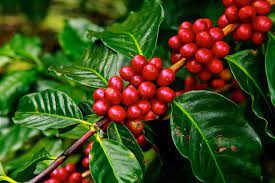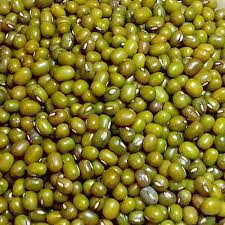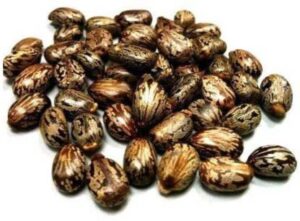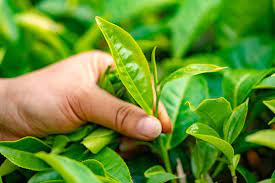Class X Term 1 Agriculture MCQ’s As Per The New Syllabus 2022-23
Class X Term 1 Agriculture is a vast and important chapter. CBSE has decided to conduct Term 1 Board in the month of November-December. As per the new rationalized syllabus, there are two chapters of Geography in portion from Class X Term 1 syllabus. They are Chapter 1 Resources and Development and chapter 4 Agriculture . Apart from this, map questions will be asked from chapter 3 Water resources.
With the change in syllabus and exam pattern, students will also have to change their strategy. Rote learning is not going to work. All the questions for class X Term 1 will be objective type which will include case study based, MCQ’s, One word, Match the column, maps etc. Objective questions either fetch full marks or zero. So, if you know the answer, the questions will be easy for you. Here are some questions from Class X Term 1 Agriculture chapter which will definitely help you in scoring good marks.
Class X Term 1 Agriculture MZQ’s As Per The New Syllabus
Case Study Based Questions:
1. Read the given passage and answer the following questions based on it.
India is an agriculturally important country. Two-thirds of its population is engaged in agricultural activities. Agriculture is a primary activity, which produces most of the food that we consume. Besides food grains, it also produces raw material for various industries.
i) Out of 10 people living in the country, how many do you think are engaged in agricultural activities?
A. 2.3
B. 3.3
C. 6.6
D. 7.5
ii. From the list of activities given below, identify the primary activity?
A) Five people catching fish in a lake.
B) Five people selling fish in the market.
C) Five people engaged in Fish processing
D. Five people exporting fish products from India.
iii. Identify the industry, which does not depend on agriculture for its raw material.
A. Dyeing industry
B. Cotton textile industry.
C. Auto mobile industry
D. Dairy farming industry.
iv. Which one is not a raw material which we get directly from Agriculture?
A. Wool and cotton
B. Rubber and coffee
C. Silk and fruits.
D. Water pumps and Tractors.
Class X Term 1 Agriculture MCQ’s
2. Arrange the following steps involved in primitive subsistence farming in sequence.
i) When the soil fertility decreases, the farmers shift and clear a fresh patch of land for cultivation.
ii) They burn the trees and produce cereals and other food crops to sustain their family.
iii) Farmers cut and clear a patch of land.
iv) agriculture is practiced on small patches of land with the help of primitive tools like hoe, dao and digging sticks.
3. A friend of yours lives in Gujarat and grows cotton in black soil. From last two years, his crop is failing and now he does not want to grow cotton. As a student of Agriculture, which of the following crops would you suggest your friend to grow.
A. Paddy and Wheat.
B. Wheat and Sugarcane.
C. Sugarcane and Jute.
D. Jute and Coffee.
4. Which one of the following is not the feature of Plantation agriculture?
A. It is labor intensive.
B. Plantation is also a type of commercial farming.
C. a single crop is grown on a large area.
D. Farming is done with the help of migrant labors.
5. A farmers grand father had a very big plot in Varanasi. He had seven children who also managed any how on the same piece of land. But, today the grand children have a small piece of land on which the production is low. What might be the reason for low production?
A. Consolidation of land holding.
B. Right to inheritance.
C. Abolition of Zamindari system.
D. Increase in the price of manures and fertilizers.
Class X Term 1 Agriculture MCQ’s
6. Hoe and Dao
A. are the two varieties of Paddy grown in Assam.
B. are the varieties of mangoes grown in India.
C. are the tools used by tribal people in farming.
D. are the types of HYV of seeds.
7. Consider the statement which is correct about the production of wheat?
A. It requires bright sunshine at the time of ripening.
B. It requires 200 cm of rainfall.
C. It is a kharif crop.
D. It grows well in the delta regions.
8. Consider whether this statement about wheat is True or False.
There are two important wheat-growing zones in the country – the Ganga-Sutlej plains in the northwest and black soil region of the Deccan.
9. I have very high nutritional value. Very often, I am also known as coarse grains. Also I am a rain-fed crop mostly grown in the moist areas which hardly needs irrigation. Who am I?
A. Wheat
B. Millets
C. Maize
D. Pulses.
10. : India is the largest producer as well as the consumer in the world. It is a major source of protein in a vegetarian diet. Being leguminous crops, it help in restoring soil fertility by fixing nitrogen from the air. Identify the crop.
A. Millets
B. Oil seeds
C. Tea
D. Pulses
Class X Term 1 Agriculture MCQ’s
11. An oilseed grown in India which accounts for almost half of the major oilseeds produced in the country.
A. Coconut.
B. Groundnut
C. Castor
D. Mustard
12. Groundnut is a kharif crop. . Linseed and mustard are Rabi crops. But I am a kharif crop in north and Rabi crop in south India. Can you guess my name?
A. Sesamum
B. Soyabean
C. Groundnut.
D. Sunflower.
13. khandsari and molasses are produced from _________________?
A. Wheat
B. Sugarcane
C. Maize
D. Millets.
14. Arhar, urad, moong and masur are the types of __________________ .
A. Millets
B. Oil seeds
C. Indian coffee
D. Pulses
15. Initially coffee cultivation was introduced on the ______________ Hills in India.
A. Aravali
B. Nilgiri
C. Baba Budan
D. Garo and Khasi
Q16. ___________ Variety of coffee was initially brought from Yemen is produced in the country.
A. Arabica
B. Black coffee
C. Alphonso
D. Golden fibre.
Q17. Identify the statement which is not correct about jute.
A. It is known as the golden fibre.
B. Tamil Nadu, Andhra Pradesh and Karnataka, are the major jute producing states.
C. Due to its high cost, it is losing market to synthetic fibres.
D. It is used in making gunny bags, mats, ropes, yarn.
Q18. Aus, Aman and Boro are the three crops of ___________ In West Bengal and Assam.
A. Jute
B. Rice
C. Mangoes
D. Tea
Q19. 210 Frost free days and bright sunshine for its growth is the major requirement of which crop?
A. Cotton
B. Jute
C. Wheat
D. Rubber
Q20. When are rabi crops harvested?
A. October
B. April
C. December
D. July
Class X Term 1 Agriculture MCQ’s
Q21. Availability of ______ during winter months due to the western temperate cyclones helps in the success of Rabi crops.
A. Monsoons
B. Western disturbances
C. Frost
D. Cold and dry Winds.
Q22. In Assam, West Bengal and Odisha, how many crops of paddy are grown in a year?
A. 2
B. 3
C. 1
D. 4
Q23. Name a crop grown in the Zaid Season?
A. Groundnut
B. Jute
C. Mustard
D. Watermelon
Q24. How long does sugarcane take to grow?
A. Almost 4 months
B. Almost 6 months
C. Almost a year
D. Almost 3 months
Q25. India is the ………..largest producer of rice in the world.
A. First
B. Second
C. Third
D. Fourth
Class X Term 1 Agriculture MCQ’s
Answer Key:
i) C. 6.6 ii) A) Five people catching fish in a lake. iii) C. Auto mobile industry iv) D. Water pumps and Tractors. 2. iii, ii, iv, i 3. B. Wheat and Sugarcane. 4. A. It is labor intensive. 5. B. Right to inheritance. 6. C. are the tools used by tribal people in farming. 7. A. It requires bright sunshine at the time of ripening. 8. True 9. B. Millets 10. D. Pulses 11. B. Groundnut 12. A. Sesamum 13. B. Sugarcane 14. D. Pulses
15. C. Baba Budan 16. A. Arabica 17. B. Tamil Nadu, Andhra Pradesh and Karnataka, are the major jute producing states. 18. B. Rice 19. A. Cotton 20. B. April 21. B. Western disturbances 22. B. 3, 23. D. Watermelon 24. C. Almost a year 25. B. Second
You may like to read:
100 Geography Questions For NTSE 2022 Which Can Create Difference – I
100 NTSE 2022 Geography Questions Which Can Create Difference – II
Class X Term 1 Agriculture MCQ’s
Q26. Which city is known as the “Grape capital of India”?
A. Nagpur
B. Allahabad
C. Cherrapunji
D. Nasik
Q27. Pears, apricots and walnuts are grown in _____________.
A. Jammu Kashmir and Himachal Pradesh.
B. Uttar Pradesh and Bihar
C. Meghalaya and Sikkim
D. Maharashtra and Karnataka
Q28. Meghalaya is known for which fruit?
A. Guava
B. Banana
C. Pineapple
D. Apricot
Q29. India produces about _______________ per cent of the world’s vegetables.
A. 7
B. 13
C. 17
D. 23
Q30. Allahabad is known for___________________
A. Oranges
B. Apples
C. Guava
D. Pomegranate
you may like to read:
Best Role Play Activities To Improve Communication Skills
Integrating Bihar with Tripura and Mizoram Under Ek Bharat Shreshtha Bharat
Pictorial Questions From Class X Term 1 Agriculture
Q1. Look at the picture and identify the crop?

Options:
A. Coconut Seeds
B. Pomegranate
C. Coffee
D. Grapes
Q2. Look at the picture and identify the crop being extracted from the tree.

A. Rubber
B. Coconut Oil
C. Castor
D. Sugarcane
Q3. By Looking at the picture, identify the variety of pulse.

A. Moong Dal
B. Mansoor Dal
C. Chana Dal
D. Urad Dal
Q4. Identify the seed from which oil is extracted.

A. Sunflower
B. Castor
C. Seasmum
D. Ground Nut
Q5. Identify the crop with the help of picture given.

A. Guava Leaves
B. Coffee Leaves
C. Tea Leaves
D. Mango Leaves
Class X Term 1 Agriculture
Conclusion:
To conclude, class X Term 1 Agriculture is an important chapter. In class X term 1, though the questions will be objective type, but it will not be that easy to score. This article “class X Term 1 Agriculture” will give you some idea about how to prepare for your exams. In this article I have used varieties of questions which will help you to perform better in your class X Term 1.
For chapter 1 Class X Geography Term I Questions From Resources and Development – Complete Guidance ” click on the given link. For Class 10 Term I Map MCQ’s – COMPLETE SYLLABUS . click on the given link.
From which Indian state the farmers commit maximum suicide and why?
I would love to here your views.
60 Most Expected Geography Questions In Term I From Class X





Thank you for this comprehensive post on Class X Agriculture objective questions! The alignment with the new syllabus is really helpful for students preparing for their exams. I appreciate the clear explanations and examples provided. Keep up the great work!
This blog post is incredibly helpful! The objective questions are well-organized and align perfectly with the new syllabus. They will definitely aid in my preparation for the term exam. Thanks for sharing these resources!
Thank you Bunty. Keep sharing and visiting shapingminds.in
I found this blog post incredibly helpful! The objective questions are well-organized and align perfectly with the new syllabus. It’s great to have a resource like this for revision. Thank you for putting it together!
Great insights on the new syllabus for agriculture! The objective questions really help simplify complex topics for us. Looking forward to more posts like this!
Thank you for sharing these objective questions for Class X Agriculture! They are incredibly helpful for revising the syllabus. I appreciate the clear format and guidance you’ve provided. Looking forward to more resources like this!